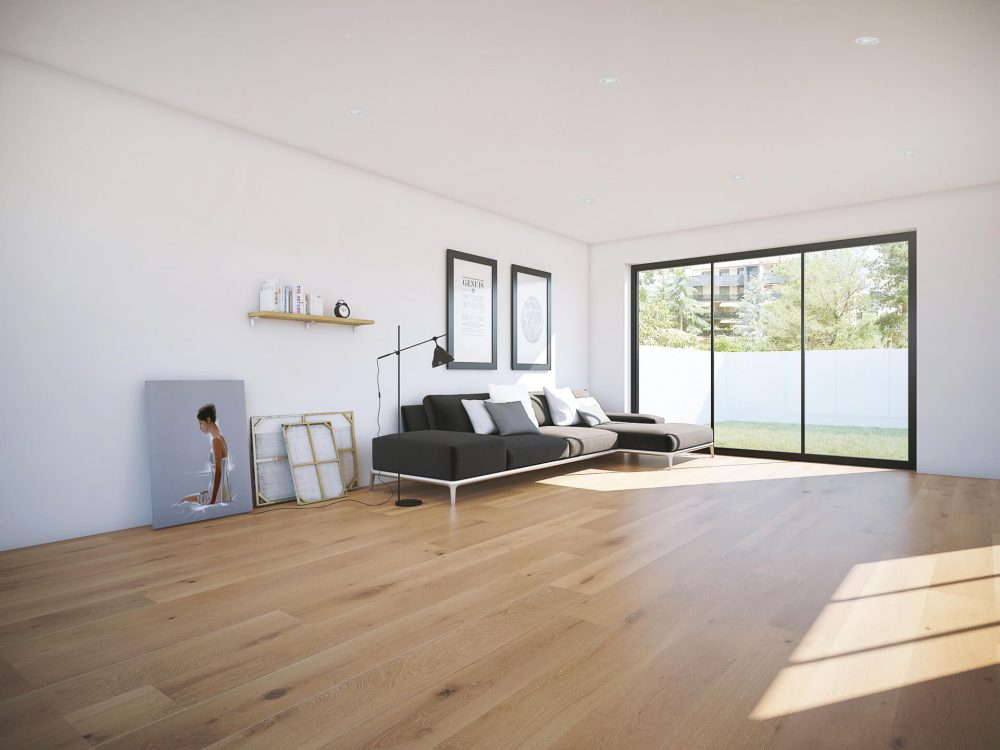
Parquet is a wooden floor. The woods used are many and varied. The design and decoration are setting trends. Oak, beech, maple, cherry, jatoba, elondo, walnut, pine woods … which were once very common wooden floors in cold areas, have now become very widespread decorative options.
In addition to its beauty and comfort, parquet is one of the few really recoverable flooring. As in all materials, the passage of time and its continued use end up causing wear, which, in the case of these wooden floors, can be solved. and how to leave the parquet as new.
Both platforms and parquet are solid pieces of wood that allow us to sanding, stabbing, polishing, varnishing and restoring, either indoors or outdoors. After intense or prolonged use, it is possible to restore the parquet floor and regain its original beauty and elegance. This time usually ranges between 10 and 20 years, depending on the hardness of the wood, quality of the varnish and use. If over time the wooden floors are scratched, stained or deteriorated, in order to leave the parquet as new you must maintain a minimum wear layer of approximately 2.5 mm. We must not confuse wooden floors with other types of flooring that do not allow any type of repair: laminate, veneer or vinyl.
How to polish the parquet?
It is important, if we decide to polish our wooden floor, to find a trusted professional and, above all, to offer us guarantees. The parquet polishing process requires specific knowledge and experience, as well as machinery. Today there are tutorials on social networks on how to polish parquet yourself, but the truth is that this task is one of the most complex and delicate phases in the maintenance of wooden floors. Therefore, as professionals in the installation and maintenance of wooden floors, what we first have to do is advise the consumer to delegate this responsibility to someone with sufficient experience. A bad restoration can irreparably damage a parquet.
Parquet professionals usually first pass the parquet polishing machine with the different numbering of sandpaper 30, 60, 120, 220 and, depending on the type of parquet and its placement, we use different techniques so that the wood is well prepared to be varnished or oiled later.
Today’s sanders pick up the sawdust, but the dust escapes. Only sanding machines with a dust absorption system not less than 2 mg / m3 air are allowed. If a parquet polishing machine with a dust absorbing bag is not used, when sweeping and removing dust with a vacuum cleaner, a mask should be used. Both new and old wooden floors must be sanded before varnishing, so that the projections are eliminated and a flat and refined surface is obtained. On old wooden floors, old varnishes and dirt must be removed at the same time. The entire process requires initial roughing, intermediate sanding, and final polishing with a finer grain. Extremely fine grains are not advisable as they can cause delaminations of the varnish at high temperatures. Ask the expert in Sablage de Planchers.
How to repair damage to wood
Before going to the varnishing phase, wooden floors may have small cracks or damage that were not visible before sanding. It is necessary to repair the damages in the wood filling with special putties of the same color of the wood so that differences are not appreciated later.
Water-based varnishing of parquet
For a good finish, we recommend giving a first coat of primer in order to cover the pores and leave the surface ready to give the first coat of finish. You have to allow 4-8 hours to pass before applying a 2nd coat, and after about 4 more hours it is when the 3rd coat of varnish is applied. After about 12/24 hours, the wood will have acquired the necessary hardness to be able to step on it and enjoy it as the first day.
We currently use water-based varnishes for parquet. They are ecological varnishes since they give greater protection than traditional varnishes, they do not give off strong odors, they are not toxic, they are fire retardant and they do not make it necessary to leave home due to the impossibility of breathing. This type of varnish is satin or matt. The solvent-based polyurethane varnish was once the most widely used for its value for money. However, the volatile organic solvents that are used with this varnish have a characteristic and strong odor that is very annoying for days. In addition, its drying is slower than that of water-based varnish. For these reasons and others, this type of varnish can no longer be used professionally.






More Stories
Timber Dining Tables | Why They Should Be Your Number 1 Choice
How to Use Microwave with Oven Functions for Quick and Easy Cooking
Jersey Shore condo to Beach Townhouse Update